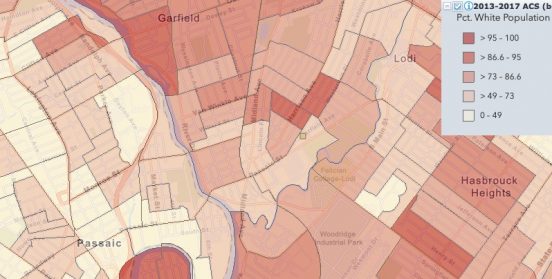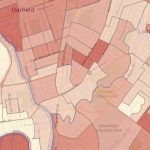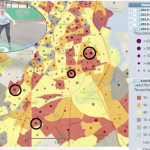For my project I decided to focus on hazardous waste dumping by looking at the surrounding area of a hazardous waste dumping site on the border of Passaic and Garfield, New Jersey. I picked this site because I noticed a pattern that there were alot more dumping sites in inner city towns like these than nearby suburbs, despite these cities actually being closer to New York City than the suburbs. I decided to focus on the wastewater discharge indicator, which is in the 84% percentile nationally for the surrounding region near the site. This measures the rate in which pollutants that come from wastewater that originate in household items like sinks, showers, and dishwashers, are infecting nearby bodies of water. If left untreated this water is often consumed by humans and animals without knowledge of its dangers, causing various diseases and viruses. Unsurprisingly, In this specific area where wastewater discharge is so prevalent, other areas like respiratory hazard index and air toxins cancer risk are above the 60% percentile nationally. Through further research on maps focusing in on education, language, and population statistics, it’s clear that minorities, those with less income, and those with less education, are all disproportionately affected by environmental bads, in this case hazardous waste. Immediately surrounding the hazardous waste site, not only are there many families below the poverty line and the number of people with a bachelor’s degree decrease, but also the english speaking population decreases, average household incomes decreased, and the overall amount of people enrolled in school decrease. Hazardous waste sites can greatly affect the health of the people near them, it can impact water and food quality, air quality, and in turn human beings health. While environmental bads like hazardous waste dumping negatively affect the humans beings that surround them, it is clear that the process that decides when and where these environmental bads will occur is incredibly calculated and forged deep into our societal social justice issues, factors of privilege like education, income, race, and class all lead to the voiceless and underrepresented members of our society being stuck with the negatives that come with hazardous waste that eventually lead to poor health among other things.
I have put together a video that goes more deeply into the issue below.





Prof. Michael Heiman (Emeritus)
May 1, 2020 — 4:37 pm
Is the “waste water” discharge from these domestic sources, such as toilets and bathwater, untreated as suggested here? What about industrial tie-ins into the sewage collection system–any industrial pretreatment as required by the Clean Water Ac? The discharge does not go through a wastewater treatment plant? If so, is the treatment itself insufficient? For what pollutants? Beyond that, it would be interesting to see the location of regulated wastewater treatment plants (under the federal and state clean water acts) in the wider region and the demographic distribution (by race, income, etc.) of the nearby population.
gamzan
May 1, 2020 — 6:02 pm
The WWDI( Waste Water Discharge Indicator) which measures pollutants discharge information is in the 84 percentile for the area, meaning that lots of this water is left untreated, at least when compared to the rest of the country.
gontareg
May 1, 2020 — 5:38 pm
It looks like theres a river that almost clearly divides the white population from the non-white population. Geographic divides like this can sometimes become societal indicators of SES based on which “side” you live on–for example, in Carlisle there quite literally exists among the residents a “wrong side of the tracks” which emulates environmental injustice tied with prejudice. Do you know of any common attitudes towards the river in terms of a geographic divide?
gamzan
May 1, 2020 — 6:00 pm
I’m glad that you brought this up, while I’m not sure of common attitudes to the river, the towns that cross when the river when commuting to New York City are towns mostly considered middle class suburbs, and the towns that don’t need to cross to get to New York City are mostly considered industrial towns.
Prof. Heiman
May 1, 2020 — 5:46 pm
OK–A different issue that the discharge of untreated (?) sewage from domestic (and also industrial) collection points I raised above based on what I though you were implying. In any case, look at the Susquehanna River at Harrisburg, PA–we speak here of the East (Black and minority–90 percent in H’burg) and West (Camp Hill, etc. 90 percent White) shores as a major dividing line-same river, different racial and economic demographics. Hence the Black and White Shores. Lots of other examples across the U.S.
Nat
May 1, 2020 — 6:40 pm
Well edited! And very well scripted! Great platform for explaining this issue.